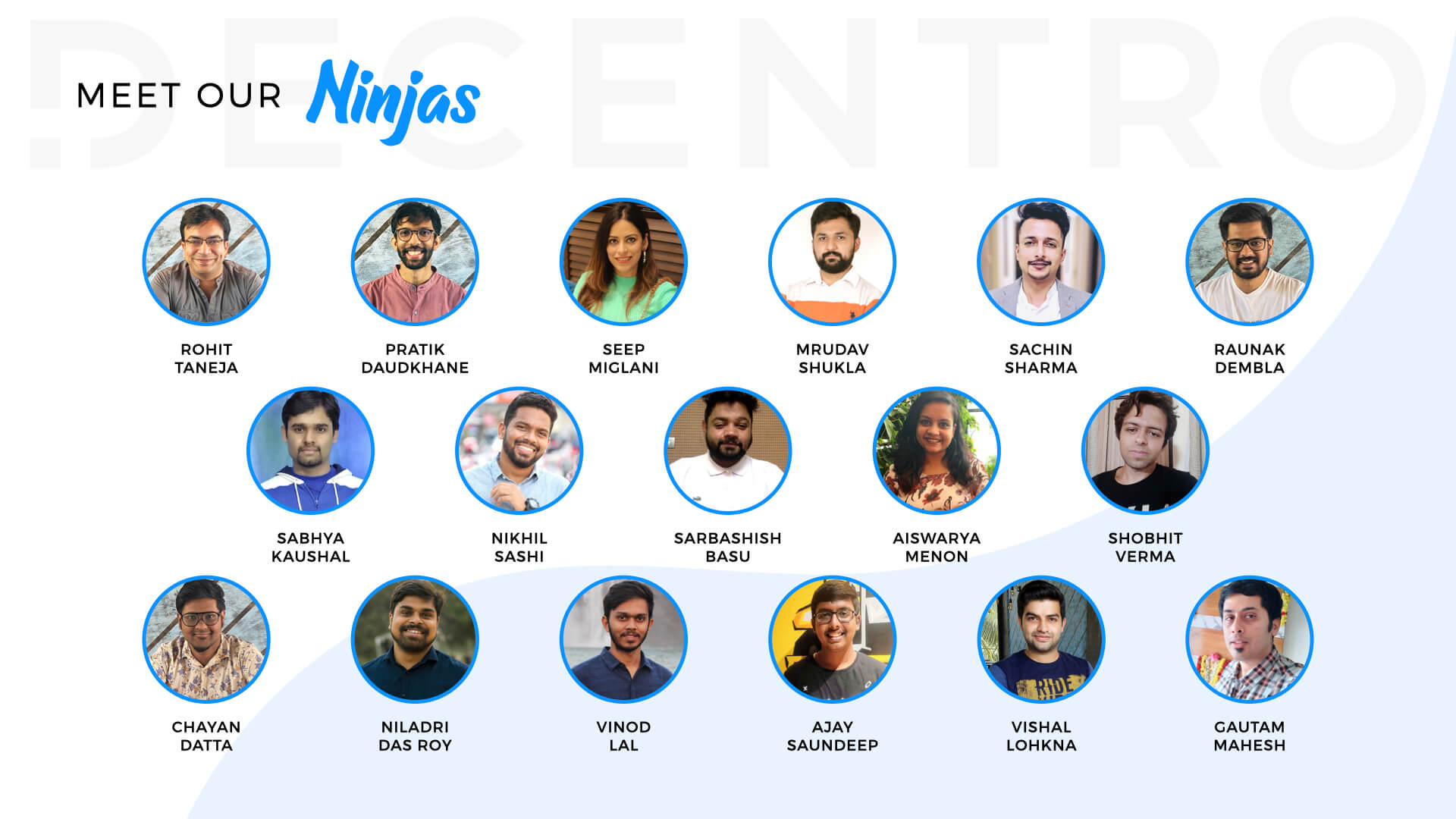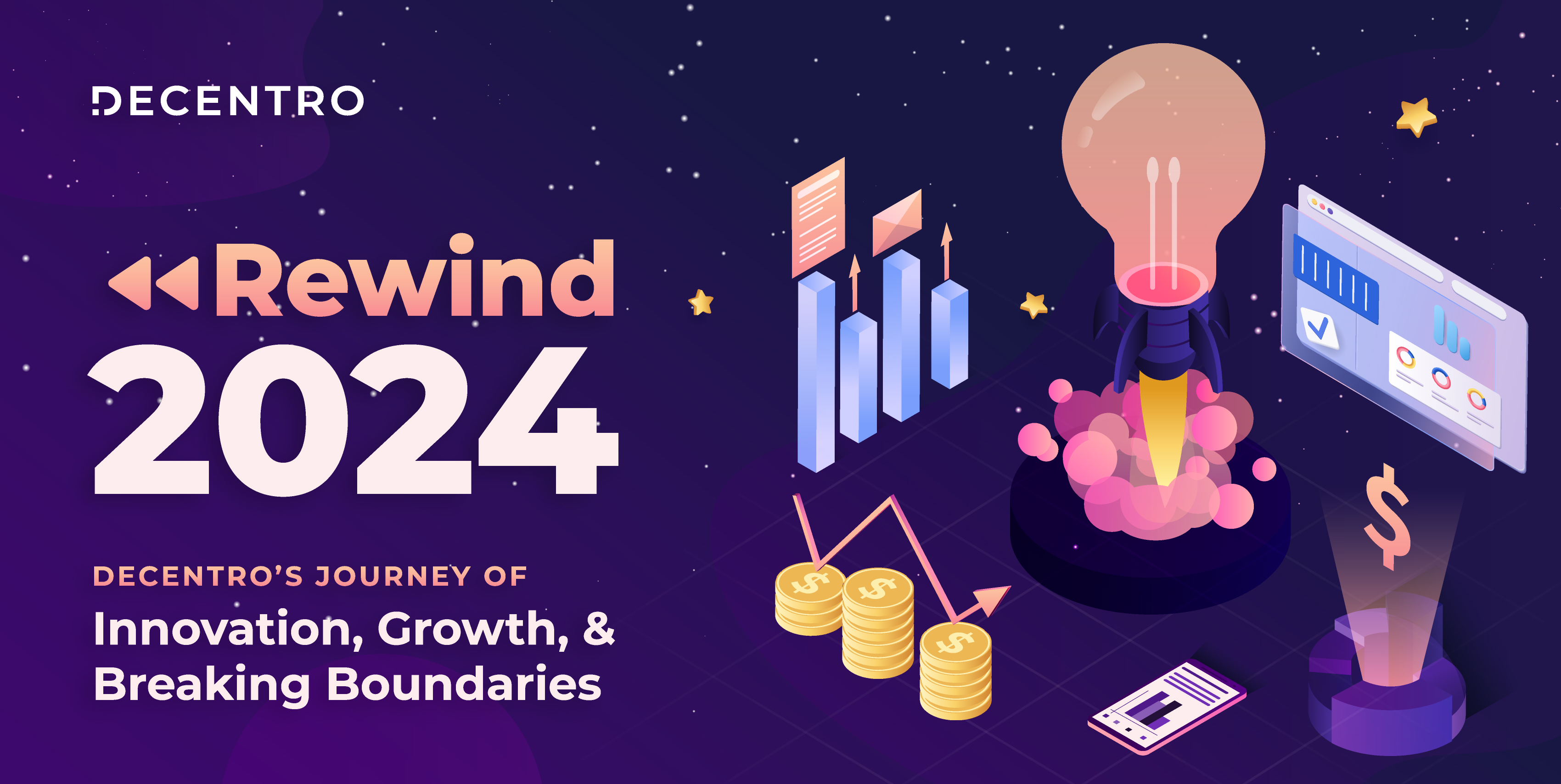Decentro turns a year old! Here are the things we’ve learned as a startup and some lessons for early-stage entrepreneurs & companies.

8 Things We Learnt Over our First Nine Months of Product Development
Fintech Serial Entrepreneur. Love solving hard problems. Currently making fintech great again at Decentro!
Table of Contents

It’s a moment of total happiness and pride today. Not just me, but for our entire team at Decentro.
As a company, we’re turning one today! Of course, our first product is still less than a year old since we launched it in July, and hence the celebrations will continue.
Looking back, there is a lot to cherish, think over the lessons that we’ve learned, and some of the achievements that we’ve garnered.
How it all Began
Decentro didn’t take flight in a situation that you’d exactly call ambient. The pandemic was right on the doorstep, and the lockdown had just been put into effect, when I registered the company last year.
The world was scared & confused.
We were in a crisis, never been before, and a million questions ran through my head about running a company amidst this chaos.
I realized that what we were about to build would ultimately enable thousands of products to come to shape in this complex banking and fintech world. I knew it’d be no easy path, and the timing could never have been more crucial.
With no-contact norms and people staying at home, it was evident that the offline economy would be hit severely. The commoner would have one struggle after another to face. It was up to the digital companies to do their bit to bring a silver lining in this otherwise dark cloud, especially in terms of seamless monetary and fiscal solutions.
Thus, with the vision & mission to make banking API integrations 10X easier & cheaper, and to enable businesses to optimize their financials & go-to-market faster, Decentro was born!
What we’ve Learnt in this Past One Year
I’d love to take this opportunity to share with all of you the things we’ve learned as a startup and some of the lessons that early-stage entrepreneurs & companies can pick up on.
Building a Team
Setting the culture right from the start was something I have always been particular about. Like the lego blocks laid neat to erect a fantastic architecture.
It goes without saying the immense appreciation and the gratitude we have for the initial employees who joined us. It takes courage and determination to trust just an idea alone and hold hands to turn it into a reality.
We’re abundantly blessed at Decentro to have a team that breathes our cultural values, as a company, in unison.
Few of the principles that guide us as a team are:
- Radical truth and honesty towards each other, even if it is uncomfortable.
- Empathy towards our customers (companies) and walking in their shoes at all times.
- Execute and manage your task as someone operating a machine, which means both zooming out at the high level as well as zooming in for attention to detail.
Here are our rock stars who put their best foot forward in anything they do.

Hustle to Onboard the First 10 Customers
One of the most challenging tasks for any startup out there is to convince and onboard your first set of customers.
Being a new player, there isn’t any reason why you should either, isn’t it? One of the very motives why you should be calmly aggressive and go about it.
It wasn’t just the sales team that took calls- we all did. Even then, since there are no case studies to showcase or customer base to present, closing a deal is never an easy route.
Here are some of the things that we learned from the journey of onboarding the first 10 customers.
Each business has a different case. The product infrastructure while setting out may not be sufficient to accommodate most of it- you build a minimum viable product, step foot in the market, and then iterate with time.
Understanding the product well and customers even better was crucial. Well, you know the obvious reasons why this is important. Adding to that list is the fact that, in the beginning, it’s very easy to get distracted if you pursue customers without focus.
“Consequently, you’ll end up getting lost in a feature-rampage and building a product that is suitable just for ‘today’ and not tomorrow.”
Another thing that has worked super well for us was the decision to approach early-stage startups just like ours. Both parties are clear on one aspect- launching & getting established in the market. It became easier to relate, collate, and close deals. Companies nowadays are not willing to spend long integration cycles with banks that delay their product launch by months altogether. Our APIs helped them to get to the market 10x faster.
Also, the con of approaching big players in the market (at an early stage) is that they expect customization to a large extent.
Are you thinking of only traditional routes for customer acquisition? That’s not quite being 10x.
Social listening is something that many Founders are just beginning to grasp. We constantly made an effort to do this. And, I must say the efforts are paying off!
As a result, leveraging the social presence and network of the team proved to be pivotal in getting us quality inbounds. Educating the audience on how you help solve a problem rather than talking endlessly about the sparkling features.
This was the time we took to understand customers, their pulse, and the market weather. With each customer we onboarded, we used their case studies to help prospects understand the product better.
Challenges & Downtime Issues
Building meager APIs with average response times is something anyone can do. However, would that really make a difference to the industry as a whole?
We’ve had our fair share of challenges when it comes to downtimes.
When it comes to partnerships with banks, it was crucial to ensure that they were happy with our onboarding process and compliance approaches. The strong pedigree of the founding team helped us here. As of now, we have 4+ major private banks in the country as our partners, and we’re in the effort of adding more.
It’s tricky enough to handle a single banking infrastructure integration. Now, imagine handling multiple such integrations simultaneously, and making them available via an inter-operable & uniform API format. Sounds quite daunting. To be honest, it’s no cakewalk either. This is precisely one of the aspects where our product stands out. At the same time, such integrations have made the product quite resilient & powerful.
And, I hope it has been a delight for our team, as much it has been for me as a product focused-founder.
When you are building a product company, the speed of the development is extremely critical. However, when you are building an underlying fintech infrastructure product, quality plays a vital role as well. Balancing the two together is no easy feat, and this is something that we are extremely proud of having conquered as a team.
Oh, yet another memorable anecdote to share with all of you regarding the challenges we’d faced- a downtime. A downtime could be hardly memorable, yes, you’re right; except that the same was caused as our APIs broke due to heavy traffic.
How we Approached & Broke Things Down- Teamwise
One of the things we firmly believe at Decentro is helping individuals realize their true potential and enable them to utilize it thoroughly.

For this, all of us here have complete ownership and accountability for everything we take up. Micromanagement is out of the window to ensure this happens well in order.
One of the best decisions we have taken at Decentro is to hire young and extremely talented people who are driven to achieve goals and are passionate about realizing their dreams.
The freedom to communicate openly allows everyone to share their views, discuss, veto out till the best option is chosen. We’ve extended this to each time in the company.
The Tech Team: Sprints & Resolving Issues
With a product-centric approach, setting up a strong team that joins hands and works like a well-oiled machine was indispensable.
We’re growing fast, and one of the fastest expanding departments is the tech team, naturally.
Our engineering approach has been quite simple & straightforward.
- Approach everything from first Principles.
- Understand the underlying pain point we’re addressing and solve it using the above.
When we started, the architectural set-up was a plain vanilla one. We closely monitored the traffic patterns and the API usage and relied on these metrics to scale up accordingly. This approach has served us well, quite amazingly, to make well-informed decisions. For instance, when it came to microservices and containerization.
Optimization:
To ensure a smooth workflow, we employed projection management software such as Trello & Jira. With a myriad of tools, like AWS Cloud Watch, it was easy for us to track things at multiple levels to ensure any breaks are fixed at once and make efforts to dodge this proactively. Besides, it helped us understand the increasing computing & storage requirements.
Tech teams must work closely with the business team. Period. Being on the same page helps the business team to grasp the transaction trends and make better decisions. It also helps the tech team to identify blindspots and exterminate silent issues.
Team Sprints:
To optimize the team output and ease of working, we made it a point to conduct sprints diligently. The initial months saw us go full-throttle aggressive with weekly sprints. However, with time, we’ve moved to fortnightly sprints.
Individual Productivity:
Many factors affect an individual’s productivity. The one thing that keeps them cent percent focussed would be their nature of work, naturally. We make a conscious effort to identify the interests and career aspirations of each member who joins us. As a result, we make it a point to allocate tasks that coincide with this interest. A heightened sense of ownership and avid passion are the direct outcomes, thus. However, we also make it a point to motivate the team to venture out of their comfort zone, explore new things, and learn & grow, both personally and professionally.
The Marketing Angle
We were pretty clear on how to drive marketing from the get-go. Go organic all the way. Being a YCombinator alumnus, we were blessed with many opportunities, and some of them being their sturdy support and referrals as a result.
We wished to grow as a brand in all aspects; doubling down on organic efforts via content marketing, SEO, social media marketing, and email marketing.
We’re out on the journey and are constantly running experiments to see what works and doesn’t.
For instance, we ran a social media experiment to better understand the frequency of posting on Twitter & LinkedIn.
- Posting daily on Twitter boosted & showed an increase in 76% of impressions compared to the previous month and improved metrics such as profile visits.
- On the other hand, our LinkedIn posts saw a decline in the impressions, and the follower count increase seemed to be slow.
We made it a point to share our journey and learnings with the world. So these experiments are always part of our monthly newsletters. To our delight, we’ve received quite a traction from them, and helped us gather quality MQLs(Marketing Qualified Lead).
Intrigued? You can subscribe to the same here.
Sales & Customer-approach
We extended a similar framework used for onboarding the first ten customers to the rest of the sales approach.
Identify the customers when we approach them first, after the complete awareness of what we are building and for whom. We connected with decision-makers and relevant stakeholders to fastrack things and get a comprehensive overview while reaching out.
An active social media presence helped us pique the interest of the team’s primary network and their connections’ network. A bulk of the initial traction came in from the people we had worked with, in the past. They may be the best customers as they are patient and give you feedback that actually matters.
Alongside, the interest cascades to 2nd-degree connections, which eventually will help the team build a decent pipeline to work on.
They will also make an effort to understand your product and will make the sales process easier while allowing the sales team to understand what pitches work; build, iterate, and make it a solid pitch.
TLDR.
Do the homework on choosing the initial customers, and keep them as close to your ICP or Ideal Customer Persona. Post this, venture out and start the conversation.
A Case of Mismatch: Pulling the Plug
It’s never easy to part ways.
When we onboard the team, especially in the beginning, there’s a lot riding in the background- shaping the culture, forming the foundation of different teams, and building things fast & shipping it faster.
When the team is small and close-knit, it’s all the more important to ensure the right hiring choices are made.
However, things may not always go as planned. There could be a mismatch down the lane, if not immediately. There could be performance gaps, cultural differences, and a lack of alignment.
What should be done in these cases?
We say give chances to improve & perform better. To understand and align according to the collective mission & vision.
If there’s no match despite the efforts, it’s best to part ways amicably for the sake of the employee’s career ahead and the team as a whole.
This pretty much broadly covers our journey from day 1. There’s still a long way to go, a lot to accomplish. We’re marching forth with the dream that gave birth to Decentro in the first place- simplify Banking & financial integrations; make it as easy as it should be.
From all of us at Decentro!
Cheers!



Comments are closed.